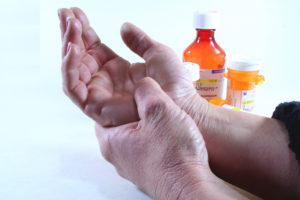So many people have to live with painful conditions day in and day out. Sometimes, their pain isn’t obvious, but it’s still there. For example, someone with a bad back may experience ongoing pain and never say much about it. People whose lives are impacted by pain are often very brave and make a point of keeping their suffering to themselves. However, now and then, they may let it slip just how much they struggle to stay positive in the face of discomfort. Many people end up taking painkillers as a solution. This can seem like the best way forward especially when you are in urgent need of pain relief. These days it’s all too easy to buy co-codamol 30/500 and other strong prescription painkillers at online pharmacy sites without realizing that these are only short term solutions.
 If you know someone who is living with a painful condition, you should be aware that you can help. While you might not be able to take that person’s pain away, you may offer them some advice or just be a supportive and loving friend, partner or family member. Sometimes, people who live with pain feel very alone with their pain. They feel like no one understands.
If you know someone who is living with a painful condition, you should be aware that you can help. While you might not be able to take that person’s pain away, you may offer them some advice or just be a supportive and loving friend, partner or family member. Sometimes, people who live with pain feel very alone with their pain. They feel like no one understands.
Suggest Some Alternative Therapies
In addition to providing the proverbial shoulder to cry on, you may want to ask the person if they have considered natural pain relief methods. For example, some people experience a lot of pain relief via acupuncture, which happens when tiny needles are stuck into the body’s pressure points.
When pressure points are stimulated with needles, a lot of people find that their pain eases or disappears. While every type of pain might not respond to acupuncture, a lot of pain does respond to it. Chinese medicine has been around for centuries and acupuncture is a drug-free way to explore alternative pain relief. Results vary, but those who use it and get good results definitely believe in it.
Also, there are a few natural supplements which are quite effective. Comfrey Cream is great for soothing pain topically and St. John’s Wort is available in capsule form and soothes pain as it also helps to boost and balance mood.
While you shouldn’t pressure someone in pain to do things that they don’t want to do, suggesting alternatives may, at the least, open up a good dialogue between the two of you and help the other person to know how much you care. In our busy world, taking the time to show someone in pain that you think about them, look for possible solutions to their problems and want the best for them is a powerful expression of friendship.


 Start at your neck and shoulder and then work down to your toes
Start at your neck and shoulder and then work down to your toes






